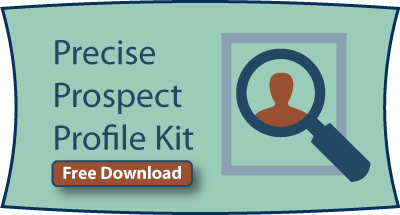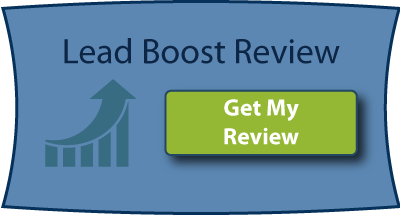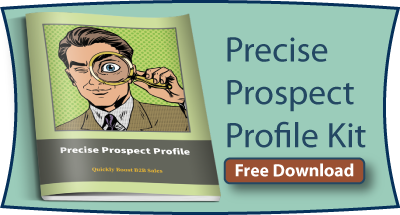If only I had more leads, I could really grow this business!Every CEO and Business Owner
Every CEO I know says that good leads are a bottleneck. So, where are all the good prospects hiding?

All hidden prospects are not the same. In fact, there are three types of evasive prospects, and your marketing approach needs to be different for each type.
Secretive Prospects
Secretive prospects are real buyers. They have a problem or pain and a budget to solve the problem. It’s just that they aren’t ready to engage with a salesperson. Not yet.
In 2012, the Corporate Executive Board (CEB) estimated that “57% of the B2B buying process is complete before a prospect is ready to talk with a salesperson.” Others have different estimates and each market is certainly different. Still, it’s safe to assume that at least 50% and as many as 70% of active buyers are secretive. They are collecting information, filtering providers, and making their initial choices.
Secretive prospects are not open to engaging with your sales team. If you try to call them, they’ll avoid you. They won’t return phone calls and they won’t respond to emails. They’re just not ready.
As a business owner or CEO, you probably don’t like this situation. You’d like to believe that secretive prospects do want to hear from you. If only your sales team would work harder. After all, you have a great product or service that would make the prospect’s world so much better. Why won’t they listen?
Like it or not, here’s the reality. Before the information explosion known as the Internet, you did have a lot more control. You had all the relevant knowledge, and buyers had to come to you. Now, buyers have all the information they want, and they can access it whenever they want—right from their smart phone.
It gets worse. If you don’t connect with secretive prospects early in their buying process, it’s often too late once they come out of the shadows. What can you do?
Inbound Out Marketing
Inbound Out Marketing is the best option to engage early with secretive prospects. It’s inbound marketing combined with targeted outreach.
Secretive prospects want to learn about you on their own terms. So, help them out. Create blog articles, helpful guides, infographics, videos—whatever it takes to help prospects understand their situation and realize you are one of the market leaders. Focus on the prospect’s problems and questions. It’s about them, not about you. They aren’t ready for you. Not yet.
Back in the day, good salespeople used to provide a lot of education in the early part of the sales process. Now, you have to rely on your website to teach prospects about your overall product category and possible solutions. Don’t make the mistake of focusing on your solution too soon. Help prospects learn about their options. They will buy from you unless your company is not a good fit, so don’t worry about telling them too much and losing them.
Targeted outreach is the secret we use to get significantly better results. If you know and can discover your ideal prospects, contact them directly. Find them on LinkedIn or through other social sites and lists.
It’s essential that you have a very clear picture of your ideal prospects. Once you know exactly “who” they are, it gets much easier to find their hiding places. That’s why we developed our Precise Prospect Profile toolkit.
Once you’ve identified some ideal prospects, offer helpful information. It’s too early to sell, so don’t. Instead offer to send your special report regarding “Common questions about _____ (Your product category).” Prospects do want helpful information, and they’ll appreciate you for it. They just don’t want sales information, yet.
Your objective is to be a helpful resource and to be positioned as a trusted option once the prospect is ready to buy.
Wannabe Prospects
Wannabe prospects do have a problem—a problem you could solve. They just don't have enough pain or budget. Wannabe's are earlier in the buying process, but many of them will become buyers, so they are still important targets. Their pain will get worse and they'll allocate budget for their next cycle.
Inbound Out marketing continues to offer a great option. However, the content and information Wannabe's need is different.
Wannabe prospects are higher up (earlier) in the sales funnel. Give them more general content like:
-
5 trends this year in the _______ industry
-
Top challenges faced by people in the ______ role
-
How a top company solved the ______ problem.
NOTE: This could be a case study involving your product, focus on the customer and their problem. Don’t make it all about your product.
This is great positioning for your sales team—you get to be the first company on their short list. They see you as helpful and have favorable feelings about your company. All your competitors will be fighting from behind.
Potential Prospects
Potential prospects are similar to your ideal prospects. They are in the right industry and the right jobs. You can expect some of them to become prospects at some point.
Perhaps they already have a solution that’s working or they are pleased with their current provider. Still, what’s working today may not be working next year. You want these prospects to know you.
The prospect’s company may be too small for your solution—at least for now. After they grow, they may be a fit.
You want to know these prospects and have them know you. When they do need you, you’ll already be positioned as an excellent choice. Even better, potential prospects fit your ideal prospect profile. That means they know others in the industry who are good prospects. Some of their friends may be secretive or wannabe prospects. You’ll get referrals from people who aren’t even customers yet. Potential prospects are influencers, so don’t ignore them.
Marketing to potential prospects is much like marketing to wannabe prospects. Create content for the broader industry. They’ll eat it up and love you for it.
Takeaways
-
Buyers now control the buying process. Companies and salespeople have to give up the delusion that they have any control. Instead adjust to this new situation and work to serve buyers.
-
Inbound Out Marketing is the best way to reach hidden prospects that are not ready or willing to engage with a salesperson.
-
There are different kinds of hidden prospects—Secretive, Wannabe, and Potential prospects. All are reachable through Inbound Out Marketing. All that needs to change is the content of your materials to best serve each type of prospect and to deliver the information they want.











 There are many factors that lead to the success of a business, such as social changes, financial status, availability of resources and so forth. But the most crucial thing that can affect your business is your personal perspective and attitude towards work.
There are many factors that lead to the success of a business, such as social changes, financial status, availability of resources and so forth. But the most crucial thing that can affect your business is your personal perspective and attitude towards work. If you’re not actively using LinkedIn to build relationships, educate your network and generate exposure and leads – you’re missing out on the action. In business, you always want to be where your prospects and clients are, and for the most part, they’re probably in social communities such as LinkedIn.
If you’re not actively using LinkedIn to build relationships, educate your network and generate exposure and leads – you’re missing out on the action. In business, you always want to be where your prospects and clients are, and for the most part, they’re probably in social communities such as LinkedIn.